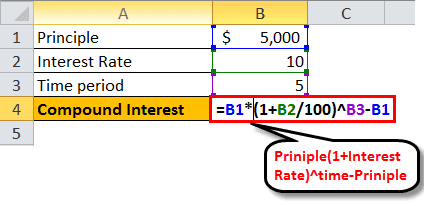Table Of Contents
Formula to Calculate Interest Rate
An interest rate formula calculates the repayment amounts for loans and interest over investment on fixed deposits, mutual funds, etc. It is also used to calculate interest on a credit card.
When a lender lends any amount to the borrower for a specific period, known as the principal amount over that lender's charge interest, that percentage of principle is known as the interest rate. In simple words, the interest rate is the rate at which the lender charges the amount over the principal landed by the lender. The interest rate is directly proportional to risk, as risk is involved when a lender lends an amount to the borrower. It is also called compensation for an opportunity lost.
In terms of investment, interest is paid on bank deposit investments like fixed, recurring, and even on the amount deposited in a savings bank account. Bank pays interest half-yearly on saving account deposits. In contrast, for fixed and recurring deposits, interest is paid based on customer request, which could be monthly, quarterly, half annually, or yearly. And the interest rate applied for one year is the annual interest.
There are two types of interest rate formula:-
- Simple Interest Formula
- Compound Interest Formula
Key Takeaways
- An interest rate formula computes loan payback amounts and interest earned on fixed deposits, mutual funds, and other investments. It is also used to calculate credit card interest.
- Simple interest and compound interest formulas are the two types of interest rate formulas.
- An interest rate formula assists in understanding and deciding on loans and investments.
- Financial institutions such as banks compute interest using the compound interest formula. CAGR, or compound annual growth rate, is commonly employed in financial applications where a single period's growth must be determined.
Simple Interest Rate Formula
Simple interest is levied when a loan is borrowed for one year or less. Simple interest is generally applied for the short term.
Simple Interest Rate = (Principle * Rate of Interest * Time Period (years))/ 100

In simple in it also written as,
Simple Interest rate = (P*R*T)/100
Example
A borrower borrows $1000 from a lender for nine months at an interest rate of 12%. Now, we will calculate the simple interest rate to be paid to a lender on a principal amount of $1000.
- Simple Interest


The interest payable to the lender is $90, and the principal amount is $1000. The total amount payable to a lender is $1090.

The Hargreaves Lansdown provides access to a range of investment products and services for UK investors.
Compound Interest Formula
Compound interest is called “interest on interest.” It is calculated on the principal amount, and of the time period, it changes with time.
The time period, it changes with time.
Compound Interest Rate = P (1+i) t – P
Where,
- P = Principle
- i= Annual interest rate
- t= number of compounding period for a year
- i = r
- n = number of times interest is compounded per year
- r = Interest rate (In decimal)
Total amount payable to be lender = P (1+i) t
Example
A borrower took a personal loan from ABC bank, he borrowed $5000 amount from a bank at the interest rate of 10%, for a time period of 5 years, compounded yearly then compound interest will be:
- Compound Interest

So from the above calculation of Compound Interest will be:

Use and Relevance
- An interest rate formula helps one understand loans and investments and decide. These days financial bodies like banks use the Compound interest formula to calculate interest. Compounded annual growth rate, i.e., CAGR, is used mostly for financial applications where single growth for a period needs to be calculated.
Disclosure: This article contains affiliate links. If you sign up through these links, we may earn a small commission at no extra cost to you.


